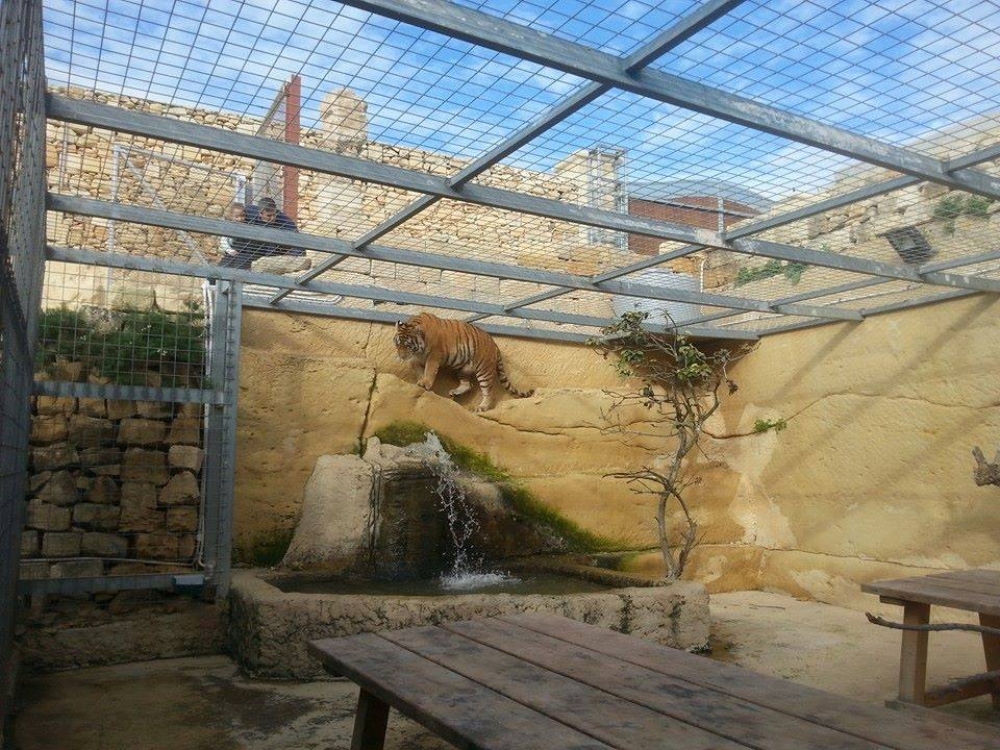Illegal zoo wants regularisation for Siberian tiger’s conservation
Two Siberian tigers are among 250 animals from 30 species being kept in the zoo, and their conservation is being invoked to justify its regularization

The conservation of the largest big cat on earth, the Siberian tiger, is being used as an excuse to regularise an illegally developed zoo, L-Arka ta’ Noe, in Siggiewi.
Two Siberian tigers are among 250 animals from 30 species being kept in the zoo, which lacks any planning permit, a project development statement authored by Perit Lino Bianco, reveals.
Their conservation is now being invoked to justify the regularisation of the zoo, which is being portrayed as a “therapeutic facility”.
The PDS cites international statistics showing that there are only between 480 and 504 wild examples of the Siberian tiger in Russia, adding to a total of an approximately 540 Siberian tigers in the whole world. At present most of these Siberian tigers exist in captivity.
Despite the pending planning issues, the government has already issued veterinary approval for the keeping of big cats in the facility.
A senior veterinary officer in 2014 certified the zoo as being adequate from a “veterinary point of view” to host the two tigers. Cages holding two black panthers were also inspected and deemed “adequate” from “an animal welfare perspective” in December 2014. The cages were also deemed “durable” enough to keep the animals from escaping.
The cats’ diet consists of freshly slaughtered chickens, pig heads, internal organs such as hearts, gizzards, liver and green tripe, vitamins and minerals. They also fast once a week.
The zoo owners claim their zoo has therapeutic properties. “It has been observed that the inclusion and interaction of animals with patients has led to improvements in the latter’s quality of life, ranging from mobility difficulties to mental health related issues.
Zoo owner Anton Cutajar intends setting up a company specifically to run the facility in a “professional manner”.
The land on which the zoo is located is earmarked as agricultural land by the local plan, but the PDS is arguing that what the zoo offers is more valuable than crops, invoking a spiritual justification for sanctioning the illegalities.
“One may argue that the proposed therapeutic zoo does not produce anything for human consumption. However this is a case whereby one needs to redefine what is a produce for human consumption? And what bears a higher value? Receiving therapy is consuming a service and in the same way good quality food heals, so does good quality therapy, food which nourishes both the body and the soul”.
History of illegality
Set over 10,500 square metres, the zoo is located outside the development zones (ODZ) and has a car park, and a 300 sq.m farmhouse to house the zookeeper and offer catering for visitors.
The site where the zoo is located was originally used as agricultural land, half of which was fallow. After 1988, the site was transformed into a cow farm without any planning permission. In 2009, MEPA issued an enforcement order against the construction of a garage, adjacent rooms and excavation works done without a permit.
In 2010 an application to regularise horse stables and a pool for horses, manure clamp, cages and a girna, was refused by MEPA. An appeal is pending before the Environment and Planning Review Tribunal.
Is captive breeding a useful conservation tool?
WWF considers captive breeding of rare, threatened, or endangered species, with the aim of eventual reintroduction to the wild, to be a “last resort” strategy.
It is exceedingly difficult and must be part of a scientifically-based management plan for the species, working closely with the country government authorities.
Moreover captive situations may interfere with the behavioral development of animals by removing them from natural predators and prey. Furthermore, having captive populations of animals does not solve underlying problems of habitat destruction, which are often one of the key causes of the species’ decline.
The Siberian (Amur) tiger breeds fairly readily in captivity with the bulk of the managed population in European and North American zoos and served as one of the models for the creation of scientifically managed programmes for species in captivity in zoos and aquariums worldwide.
But scientific studies warn that abnormal behaviours may develop in animals housed in human-made environments, if those environments do not allow them to carry out their natural behaviours such as swimming, climbing, stalking, and predation.
According to studies, tigers present a difficult case because they have large home ranges in the wild and natural predatory hunting behaviours that are difficult to provide for in captivity.














.png)







